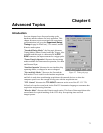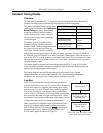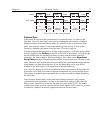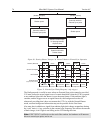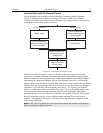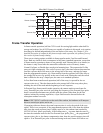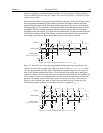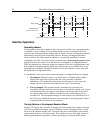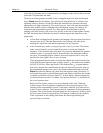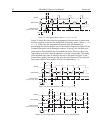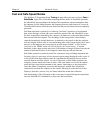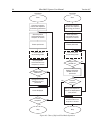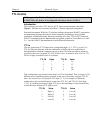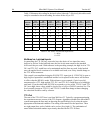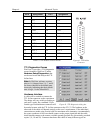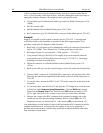
Chapter 6 Advanced Topics 81
where the cell contents can be contaminated by the charge in other cells as data is move
across the CCD and under the mask.
There are two timing options available in the overlapped mode, Free Run and External
Sync. (None should be the Shutter Type selection if using WinView/32 software and
operating without a shutter.) In both Free Run and External Sync operation, the array
photosensors see light continuously. The actual exposure time is the time between data
transfers from a photo-sensitive imaging cell to the adjacent storage cell, and may be
longer than the programmed exposure, t
exp
. Data transfer from the photo-sensitive
imaging cells t
d
o the storage cells occurs very quickly
at the start of each readout. During
the d
output n
• ed for the set
•
le
ore the subsequent readout
own in Figure 37. In these figures, Shutter indicates the
so be
t while
ng acquired. This pattern continues for the duration
of the experiment so that, during each frame, the data acquired during the
previous frame is read out.
rea , the stored data is shifted to the array
’s readout register and from there to the
ode.
In Free Run overlapped mode operation, the imaging cells are expos
exposure time (t
exp
). Then the data transfer to the storage cells takes place,
marking the start of the read and the beginning of a new exposure.
In the External Sync mode, overlapped operation only is provided. The camera
reads out one frame for every External Sync pulse received, providing the
frequency of the External Sync pulse does not exceed the maximum rate possib
with the system. A sync pulse must be detected bef
can occur. If operating without a shutter, the actual exposure time is set by the
period of the sy
nc signal. There is one exception.
If the programmed exposure time is less than the readout time in the External Sync
mode, then the actual exposure time is simply equal to t
R
, the readout time (marked
by NOT SCAN low). More specifically, if the readout time, t
R
, is greater than the
sum of t
w1
, the time the controller waits for the first External Sync pulse, plus t
exp
,
the programmed exposure time, plus t
c
,
the shutter compensation time (zero with
None selected as the Shutter type), then the actual exposure time will equal t
R
. If
an External Sync pulse is detected during each read, frames will follow one another
as rapidly as possible as sh
programmed exposure tim
e. If a shutter were present and active, it would al
the actual exposure time.
Before the first readout, clean cycles are performed on the array. When the
software issues a Start Acquisition command, the first exposure begins. Time
counting of the programmed Exposure Time begins when the sync pulse arrives
at the Ext Sync connector. The exposure ends on completion of the programmed
Exposure Time. Then the data acquired during the first exposure is read ou
the next frame of data is bei



